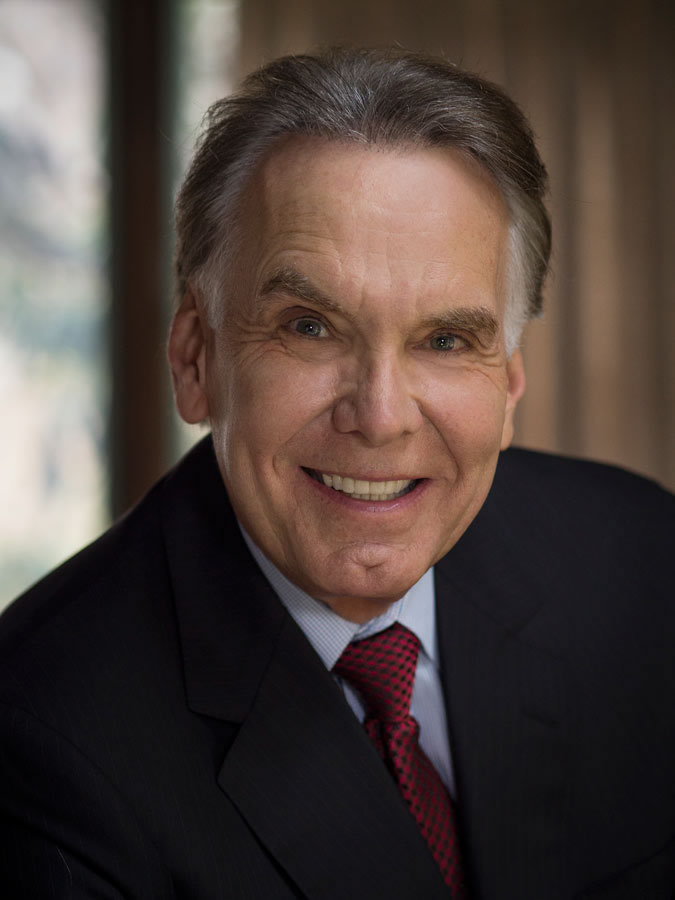8 Full Proof Strategies to Increase your Happiness
It isn’t what you have, or who you are, or where you are, or what you are doing that makes you happy or unhappy.
It is what you think about.– Dale Carnegie
Why isn’t everyone happy all the time?
I have bad news and good news.
Bad news first: You CANNOT be happy ALL the time.
Good news: You CAN increase your happiness ratio by embracing your emotions and transforming your thinking.
Let’s explore what happiness means and why being constantly happy is a myth.
According to the Merriam-Webster Dictionary, the essential meaning of happiness is “a state of well-being and contentment.”
It can be characterized by feelings of joy, satisfaction, and fulfillment. While happiness has many different definitions, it is often described as involving positive emotions and life satisfaction.

Increase your happiness by embracing emotions and transforming your thinking
So, why do so many people believe that they can be or, deserve to be constantly happy? This mistaken belief is primarily found in the developed western world where the pursuit of constant happiness is a goal that many believe can be achieved if only- you have enough ‘stuff’. Everywhere you look, products are subtly and not so subtly touted in commercials and social media as ‘things’ that can bring you true happiness.
According to most psychologists and behaviorists, there are six basic emotions that have evolved in our system to help us express, feel and survive. They are joy/excitement, fear, anger, distress, shame and disgust.
Notice that there is only one positive and five negative emotions. What does that tell you?
First, these emotions have served us well for millennia, protecting ourselves and interpreting the emotional landscape and acting accordingly for our survival. They are here to stay.
Secondly, if you play the odds without putting in the work to tilt the outcome in your favor, you have a one in six chance of experiencing happiness.
Lastly, if you want to reduce your odds of experiencing happiness, then suppress your negative emotions or refuse to engage or acknowledge your negative emotions. You do not want to do that!
Everyone is afraid of something. We fear things because we value them.
We fear losing people because we love them.
We fear dying because we value being alive. Don’t wish you didn’t fear anything.
All that would mean is that you didn’t feel anything.― Cassandra Clare, Lord of Shadows
Far too many people believe that true mental health requires us to have only positive emotions and, that negative emotions – like anxiety, fear or sadness – are plain wrong.
To tilt the odds in favor of happiness, we must choose to get in touch with our feelings. As the great psychologist Carl Jung wrote: “…the word happy would lose its meaning if it were not balanced by sadness.”
Think of sadness as a mild alarm signal, triggering us to deal with present challenges.
Try this simple thought experiment: Don’t think about a pink elephant. Well, did you?
Telling yourself “I have to stop thinking about (fill in the blank),” only makes you think about the issue or problem more. Instead, take ownership of your worries.
When you are in a negative thinking cycle, acknowledge it. “I’m worrying about my relationship.” I’m worrying about money.” “I’m obsessing about problems at work.”
Here Are 8 Full Proof Strategies to Increase your Happiness
1. Challenge your negative thoughts and tame your negative thinking
The best way out is always through.
― Robert Frost
Challenge your negative thoughts by questioning them. Studies show that this exercise can reduce the symptoms of depression.
To challenge your negative thoughts, you must become aware of them. Sound easy? Not if you have developed the addictive habit of negative thinking. But take heart.
You can do it. Here’s how:
A) Settle down alone, take a couple of deep breaths and notice your self-talk, that little voice in your head that is constantly chattering at you. Yes, it’s the one that is questioning or judging right now!
B) Step back, like you do watching a YouTube video or movie, and just OBSERVE.
C) As you observe, notice the thought and say to yourself, “Isn’t that Interesting.” That simple phrase allows you to remain neutral and decrease the emotional impact of the negative thought.
2. Journal for your mental health
We tend to forget that happiness doesn’t come as a result of getting something we don’t have, but rather of recognizing and appreciating what we do have.
– Frederick Keonig
Both my clients and I have found that journaling daily clears the mind and increases happiness. This is especially true when you conclude the entry in your journal by listing three things you are grateful for.
This is backed up by a great deal of research which suggests that writing in a personal journal allows you to express your emotions, be mindful of your circumstances and resolve inner conflicts.
3. Practice Optimism. Optimism is looking at the positive side of any situation
Optimism. It’s not just a mind-set, it is behavior.
– Larry Elder
Let me be clear: Optimism does not mean ignoring the reality of a tough situation. Take being rejected or losing a job. Many people give into defeat and despair. Taking the role of the optimist, you would acknowledge the reality of the loss, and accept the challenge to turn it around.
Many of my clients learn to look at a situation in a more hopeful way. They acknowledge that it is going to be difficult and take it as an opportunity to reevaluate their life goals and find work that contributes to their overall happiness.
Optimism can be learned, even if you were raised by a family of negative thinkers and complainers. This requires consistent, disciplined and focused training to look for the positive.
Thinking positive thoughts and surrounding yourself with positive people really does help. Optimism, like pessimism, can be infectious. So, make a point to hang out with optimistic people.
4. Choose to care for others
Caring about others, running the risk of feeling, and leaving an impact on people, brings happiness.
― Harold Kushner
I am usually against suggesting others spend time on social media. However, I just watched a TED talk presented by neuroeconomist Paul Zak that has led me to make an outlandish suggestion.
Zak believes we all have what he calls “the moral molecule” which is associated with both love and pain relief. This molecule releases elevated levels of oxytocin (another happy hormone) when we think about those we care for and love. Oxytocin is responsible for trust, empathy and other feelings that help build a stable society.
Studies have found that even spending time on social media looking at photos of your family and friends (you know, the ones you like) can raise oxytocin levels making people happier than they were before they looked at photos or status updates.
Give it a try. What have you got to lose?
5. Exercise
Those who think they have no time for bodily exercise will sooner or later have to find time for illness.
-Edward Stanley
Not everyone jumps with joy when I advocate exercise is another tool to increase your happiness. The fact is that exercise does make people happier. Endorphins, a natural painkiller, are released by exercising.
Think out of the box. There are many ways to do exercise other than weightlifting. Think fun! Dancing, swimming, or biking. Also, carrying groceries, climbing stairs, yard work or playing tennis. If you are concerned about your age, try the newest rage, Pickleball, a cross between tennis, badminton and table tennis.
6. Having Pets
Pets are humanizing. They remind us we have an obligation and responsibility to preserve and nurture and care for all life.
-James Cromwell
It’s not surprising that research has found that some of the happiest people are the ones who have a pet. Studies found that pets get us outside our own worries and focus on taking care of something besides ourselves. Therefore, it increases self-esteem, lowers stress, gives us a sense of purpose, adds meaning to our lives and even gets us to exercise.
7. Volunteer to help yourself by helping others
Trying to be happy without giving to others is like trying to kiss alone.”
— Brian Vaszily
According to psychologist Mark Snyder, volunteering creates feelings of greater self-esteem and psychological well-being — which, of course, leads to happiness. Snyder says that in our society, we are often under no obligation to help others, but that when we choose to do so anyway — going “against the strong dynamics of self-interest” — the feeling that comes with such selflessness does wonders for the psychological self. And the more one volunteers, the more positive the effect, further adding to feelings of happiness.
8. Creativity
Happiness lies in the joy of achievement and the thrill of creative effort.
-Franklin D. Roosevelt
It is in our makeup that we are creative. I’ve spent decades exploring and researching how creativity sparks happiness. The best news is you don’t have to be a professional actor, composer, dancer, writer, or painter to be creative. Anyone and everyone can be creative in their own right. The good news is that when you are involved or emersed in creativity, your brain gives you a shot of the wonderful, happy chemical called dopamine.
All you must choose to do is find time for projects and hobbies like writing in a journal, building model airplanes, knitting or any crafts, sketching or playing a musical instrument to get the benefits of creativity.
Keep in mind that you are doing this for you only, not to impress or entertain.
Age and happiness.
At age 20, we worry about what others think of us. At age 40, we don’t care what they think of us.
At age 60, we discover they haven’t been thinking of us at all.-Ann Landers
A 2014 study found that age has quite a bit to do with happiness. It found that people in their 70s were far happier than 18-year-olds, because – even though both age groups experienced extraordinary events – the people in their 70s, who had more life experience and knowledge about themselves, could enjoy it more.
Studies have also confirmed that being 69 and older is the happiest time for many individuals. Here’s a shocker. Age 23 tends to be an especially happy age as well.
The saddest age for many is that midlife-crisis period of early 40s to mid-40s.
I was inspired to write this article because one of my grandsons was questioning why he wasn’t happy all the time. Well, now you can choose to apply one or more of these eight strategies to increase your happiness. By doing so, you can choose to mature emotionally and experience less of the negative and more of the positive.
You can Increase Your Happiness and live an Exceptional life!
IMAGINE THAT!

James Mapes is the founder of Quantum Leap Thinking™, creator of The Transformational Coach™, expert on the psychology of “applied imagination,” best-selling author, highly acclaimed business speaker, consultant, seminar leader and personal excellence coach.
